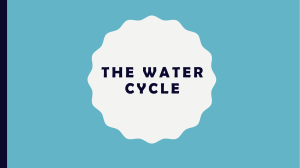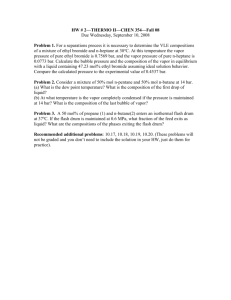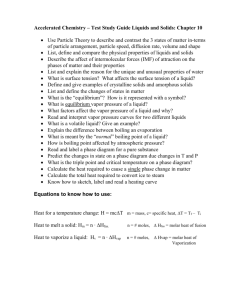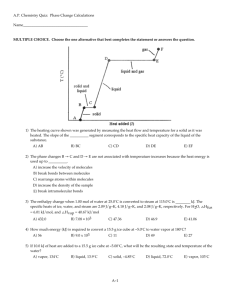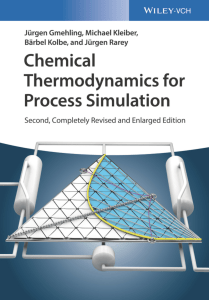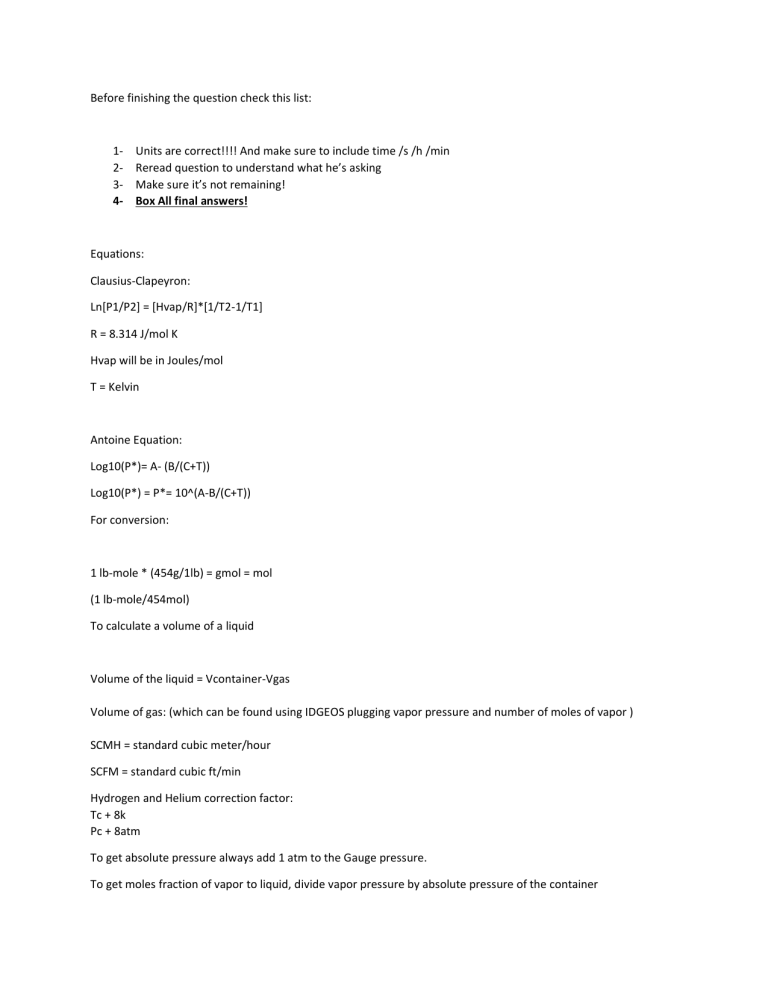
Before finishing the question check this list: 1234- Units are correct!!!! And make sure to include time /s /h /min Reread question to understand what he’s asking Make sure it’s not remaining! Box All final answers! Equations: Clausius-Clapeyron: Ln[P1/P2] = [Hvap/R]*[1/T2-1/T1] R = 8.314 J/mol K Hvap will be in Joules/mol T = Kelvin Antoine Equation: Log10(P*)= A- (B/(C+T)) Log10(P*) = P*= 10^(A-B/(C+T)) For conversion: 1 lb-mole * (454g/1lb) = gmol = mol (1 lb-mole/454mol) To calculate a volume of a liquid Volume of the liquid = Vcontainer-Vgas Volume of gas: (which can be found using IDGEOS plugging vapor pressure and number of moles of vapor ) SCMH = standard cubic meter/hour SCFM = standard cubic ft/min Hydrogen and Helium correction factor: Tc + 8k Pc + 8atm To get absolute pressure always add 1 atm to the Gauge pressure. To get moles fraction of vapor to liquid, divide vapor pressure by absolute pressure of the container SRK is the most accurate but only applies to limited set of pure species. For SRK use 0.08206 units will cancel out Kay’s Rule/Compressibility factor is the only option for gas mixtures When you do DOF 1234- Make sure to re-read the question to see if he asks about “Remaining” unknowns When you do DOF for unreactive units you can only use Molecular balance When you do DOF for reactive units you can only use Extensive or Atomic bal When you write independent balances make sure that this is in fact independent by looking if there’s a way to make those equal to each other by multiplication or division otherwise it should be independent 5- If you made any assumptions state it. Definitions: Tcrit = or a pure substance is the temperature above which the gas cannot become liquid, regardless of the applied pressure. Pcrit = the pressure above which liquid and gas cannot coexist at any temperature. 1 1

